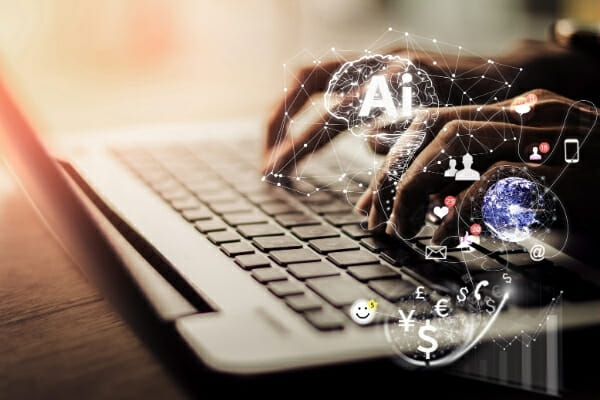Human resources tech trends to watch in 2021
 Human Resources technology has changed dramatically in recent years. Continued changes to work environments and workflow will force tech to keep up.
Human Resources technology has changed dramatically in recent years. Continued changes to work environments and workflow will force tech to keep up.
What exactly is HR Technology? This is an umbrella term that includes all the tools that HR uses to ensure a great employee experience. HR technology securely stores data, automates processes, and provides analytics to enable intelligent decision-making. These tech tools can manage pay, benefits, recruiting, onboarding, performance management, and more.
As the number of HR tech solutions expands rapidly, businesses will have to carefully analyze which solutions fit best. Choosing the wrong program, or solving a problem that wasn’t there in the first place, could waste both time and money.
The advancement of HR technology
The available HR tech has advanced significantly in recent years. As the workforce shifted to remote work due to the pandemic, the importance of useful HR tech tools increased at the same rate.
Companies are looking to improve functionality to meet the needs of the changing work environment. From time tracking to virtual onboarding, HR tools can help make life easier for employers and employees.
Businesses are focused on maintaining productivity, deploying digital tools to support remote work, and improving collaboration as hybrid and remote work models continue in 2021. Features such as self-service apps, virtual performance management, self-service portals, cloud-based systems, health status tracking, remote learning and development, and even contact tracing are trending elements for HR tech.
What Human Resource Information Systems support the new work world?
Human Resource Information Systems (HRIS) can help manage employee information such as salaries, performance appraisals, reporting structures, and personal information. HRIS systems can also manage company documents like employee handbooks and safety procedures. The right HRIS system will even integrate with your Applicant Tracking System to ensure an easy hiring process.
Here are some additional ways the HRIS system can support the department:
- Applicant tracking systems (ATS) that support the hiring process
- HCM (human capital management)
- Benefits administration software to manage employee benefits
- Payroll management tools for compensation management
- Tools to manage talent or manage employees
- Workflow, scheduling, or resourcing tools
- Employee training modules
- Employee engagement
- Performance Management
A good HRIS system will also provide employee self-service options for simple tasks and help cut down on HR’s time. The importance of intuitive, easy-to-use systems cannot be overstated, especially as millennials make up more and more of the workforce. They grew up with the internet and apps, so they assume that they’ll have access to highly intuitive, easy-to-use, cutting-edge HR tech.
Many HRIS solutions offer extensive mobile capabilities as part of their service offerings. Vendors typically will provide applications for mobile devices for both Apple and Android devices. This capability provides the latest accessibility for end-users, as these apps can allow for anything from adjusting 401k contributions to completing benefits enrollment to viewing pay stubs from anywhere in the world.
All employees appreciate easy-to-use systems, and adoption will be much higher if you have an interface that is simple and intuitive. These tools can help free up HR staff to focus more on strategic initiatives and less on paperwork and manual processes.
Virtual hiring and onboarding
Video interviews, remote hiring, and onboarding are being conducted virtually during the pandemic — many don’t expect that to change in the future. That means many companies are perfecting their online hiring process to ensure the onboarding experience is a good one.
The advent of artificial intelligence (AI) is taking HR by storm. Today, AI algorithms can assist with applicant sourcing and even analyze an applicant’s social media. With many companies prioritizing diversity and inclusion, AI tools can even help ensure candidate diversity.
Still, the challenges to virtual hiring can seem daunting. How do you build camaraderie and collaboration among a disparate workforce? How do you ensure smooth delivery and setup of IT and tech tools?
Redesigning the virtual employee experience to ensure touchpoints will be crucial to attracting and retaining talent. Implementing virtual job shadowing or an online buddy system for new employees might take the place of the welcome lunch and in-person greetings.
Employee wellness
When COVID-19 hit, a shift to remote work drove a different type of wellness check. From mental health to work-life balance, HR teams face a whole new approach to ensuring employee health and wellness while working remotely or onsite during a pandemic. Many companies have increasingly focused on employee mental health, not just physical health or attendance.
Companies have worked to implement a variety of tools that help ensure:
- Access to telehealth and mental health resources
- Financial well-being
- Work-life balance
- Ensuring teams and relationships stay strong
- Benefits policies that support life during a pandemic
- Apps, videos, and webinars that address burnout, stress, and pandemic affects
Also, today’s time and attendance systems can go beyond simple tracking and perform employee pulse checks, ask for feedback, and provide a means for two-way communication. New technology allows some systems to track how many hours employees have worked and alert management if they might need a break or reach burnout.
Another outcome of the pandemic is the advent of HR tools that can enable contract tracing and help prevent the spread of COVID-19.
Many organizations offer employee Assistance Programs (EAPs) to provide more targeted support to employees. EAPs provide organizations with the tools and resources necessary to target the needs of end-users specifically. Particularly in today’s pandemic-stricken world, employees may need assistance with a wide range of issues, ranging from childcare to depression. As HRIS systems grow and integrate, the ease of access to EAPs also continues to evolve to support workers.
Productivity tracking and analytics
Many managers find it harder to check up on employees when they are working remotely. One in four companies with remote workers purchased technology in 2020 to track and monitor employees working from home during the pandemic. In 2021, we expect to see more regulation of this area, allowing employee privacy and productivity tracking to be in balance.
Ensuring that managers are tracking the right metrics is a critical component of today’s corporate life. HRIS systems ensure that managers can measure only the data that matters across a variety of data points. More and more companies focus on outcomes and solution delivery rather than focusing on hours spent at a desk. As this workplace environment continues to evolve, HRIS systems will continue to grow to meet both the business and end-users needs.
Additional Resource: HR tech can also be a great solution for managing otherwise unwieldy SOPs. We’ve highlighted 7 of the best SOP software options available.







